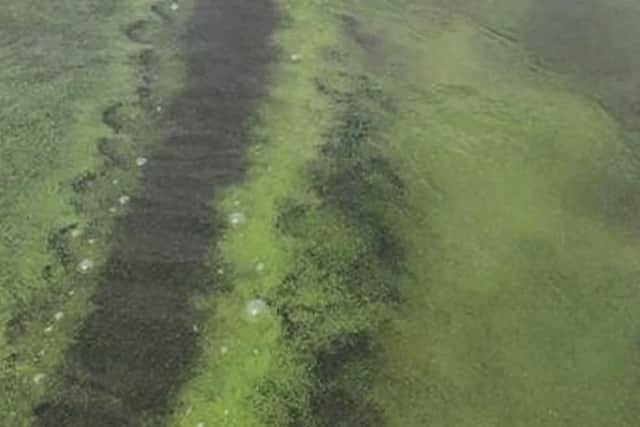Blue-green algae Northern Ireland: Portstewart Strand and Castlerock - Department of Agriculture addresses how long beaches will be affected by cyanobacteria?
and live on Freeview channel 276
This week warnings were issued that dangerous blue-green algae had impacted both beaches.
The National Trust advised that Department of Agriculture sampling took place on Wednesday 5 July and confirmed the presence of potentially toxic blue-green algae at Castlerock, with suspected blue green algae noted at Portstewart. These are freshwater species and the source is likely to be the River Bann.
Advertisement
Hide AdAdvertisement
Hide Ad“Please protect yourself and others by staying out of the water,” the trust warned.


The British Veterinary Association (BVA) recently urged pet owners to take steps to keep their dogs safe when walking near freshwater bodies this summer due to the risk of toxic blue-green algae growth.
Blue-green algae, or cyanobacteria, is a group of bacteria that can contain dangerous toxins which can be harmful and potentially fatal to pets, livestock and birds if ingested even in small quantities.
The News Letter asked the Department of Agriculture Environment and Rural Affairs (DAERA) how long both beaches would be likely to be impacted this summer.
Advertisement
Hide AdAdvertisement
Hide AdHowever, because it is such a new situation and there is limited scienitific research, officials could not give answers with certainty.
A DAERA spokeswoman said: “Blue-green algae (cyanobacteria) are microscopic, plant-like organisms that occur naturally in freshwater and marine environments. Normally, blue-green algae are not visible in the water, however during periods of warm and sunny weather with little or no wind there can be a rapid increase in the numbers which is known as an algal bloom.
"Algal blooms can occur throughout the year but they are most common from May through to September when suitable weather conditions combine with a supply of nutrients. The duration of blooms may last for a few days to several weeks until conditions in the water body change and the algae die and decompose.
"All blooms can be unpredictable and their location within a water body can change throughout the day depending on wind direction and currents. Therefore, a bloom that may be visible at one location one day may not be visible the next. Decaying blooms can also appear as scum or foam along the shoreline as a result of being carried by wind or wave action.
Advertisement
Hide AdAdvertisement
Hide Ad“The transport of cyanobacteria blooms from inland waters to estuarine and coastal marine waters is not fully understood with limited research into the topic to date.
"Although most freshwater cyanobacteria cannot survive for extended periods in saline waters, levels of salt tolerance can vary greatly between species. Further monitoring will be undertaken over the next period to assess the presence of algal blooms in the area and DAERA will continue to provide updates to bathing water operators.”
In the event of a water pollution incident, the public should immediately contact DAERA through the 24 hour Incident Hotline (Phone 0800 807060).